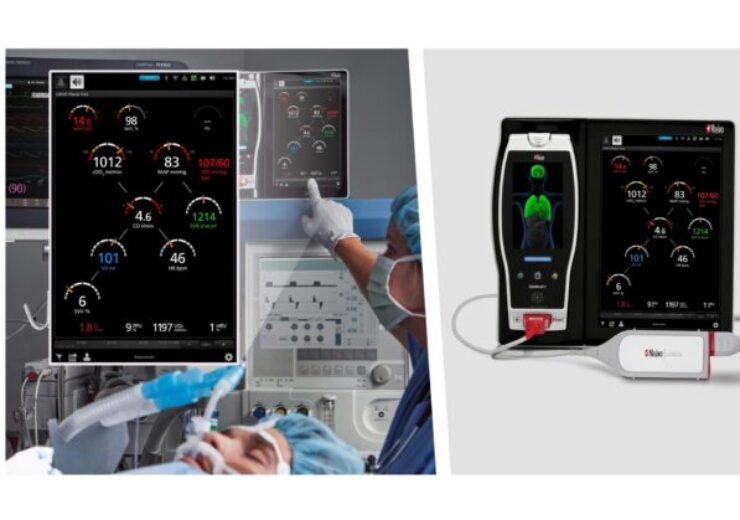The US-based medical technology company has designed the BIC module to monitor a wide range of advanced haemodynamic parameters using the beat-by-beat PulseCO algorithm

Masimo LiDCO board-in-cable module. (Credit: Business Wire)
Masimo has secured the CE mark, under the European Union (EU) Medical Device Regulation (MDR), for the LiDCO board-in-cable (BIC) module to provide advanced haemodynamic monitoring.
The LiDCO module is intended for efficient setup and simple, flexible operation using the patient’s existing arterial line and blood pressure transducer.
The US-based medical technology company has designed the BIC module to monitor a wide range of advanced haemodynamic parameters using the beat-by-beat PulseCO algorithm.
According to Masimo, LiDCO can connect to multi-patient monitoring platforms such as the Masimo Root Patient Monitoring and Connectivity Hub for haemodynamic monitoring.
The BIC module, along with the PulseCO algorithm, can be added to doctors’ Root patient monitoring hubs to maximise flexibility for physicians and hospitals, said the company.
The medical technology firm said that the module can activate haemodynamic monitoring alongside other supported metrics without using a separate haemodynamic monitoring box.
LiDCO is said to offer a range of features, including guided protocols to help evaluate fluid responsiveness, rich trending data, and notifications for beat-by-beat pressure analysis that can be displayed on the Root monitor.
Masimo founder and CEO Joe Kiani said: “Bringing LiDCO’s beat-to-beat advanced hemodynamic monitoring to Masimo Root opens up the possibility of providing a more complete, continuous picture of cardiac output (CO) and oxygen delivery (DO2).
“Currently, haemodynamic monitors can provide continuous analysis of blood pressure information but rely on intermittent data from other monitors for oxygenation – giving clinicians only half of the information.”
The beat-by-beat analysis from Masimo’s module delivers instant feedback on fluid and haemodynamic status. It also prevents delays that are frequently seen in other haemodynamic monitors.
Additionally, the Root monitor and other multiparameter platforms are compatible with its simplified board-in-cable architecture. This eliminates the need to add a specialised haemodynamic monitor to the already busy operating room and intensive care unit (ICU) areas.
Furthermore, the use of LiDCO has been demonstrated to lower postoperative problems, expenses, and even fatalities after 30 and 180 days following surgery, according to the medical technology company.
